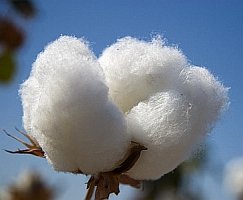International consortium advances cotton research
21 December 2012 | News | By BioSpectrum Bureau

Cotton research reaches huge milestone - International consortium compares gold standard sequence of cotton (Gossypium raimondii) with draft sequences of three other Gossypium species
Singapore: An international consortium of scientists assembled a 'gold standard' sequence of the simplest cotton variety (Gossypium raimondii) and compared it to 'draft' sequences of three other Gossypium species, one of which was an Upland cotton variety. This scientific breakthrough leverages new biology to put cotton on a trajectory to increase yields, fiber quality, and to make more efficient use of the inputs necessary to grow cotton. The research was published in the December 20 issue of Nature.
An international consortium of scientists assembled a 'gold standard' sequence of the simplest cotton variety (Gossypium raimondii) and compared it to 'draft' sequences of three other Gossypium species, one of which was an Upland cotton variety. This scientific breakthrough leverages new biology to put cotton on a trajectory to increase yields, fiber quality, and to make more efficient use of the inputs necessary to grow cotton. The research was published in the December 20 issue of Nature.
The research is a joint effort by a consortium of international scientists representing varied scientific research disciplines and spans more than 20 years. Led by Dr Andrew Paterson from the University of Georgia, the findings will help expedite the development of robust and innovative cotton varieties that will help meet the fiber and food demands of a growing population, and can help optimize the use of inputs and, thus, contribute to reducing environmental impact of growing cotton. On a broader scientific level, these whole genome comparisons provide insight into "how a polyploid becomes more than the sum of its parts," said Dr Paterson. Adding credence to the value of this research is the fact that no cotton-centric research has been published in Nature since 1961.
Dr Kater Hake, VP, agricultural and environmental research at Cotton Incorporated, put the relevance of this breakthrough research into context: He said, "The majority of the 400 research projects funded by Cotton Incorporated each year focus on ways to maximize efficiencies of cotton crops in varied geographic regions, each facing varying challenges. Essential to that goal is understanding cotton plant biology at its most fundamental level." Cotton Incorporated, funded by US growers of upland cotton and importers of cotton and cotton textile products, is the research and marketing company representing upland cotton.
Dr Don Jones, director of agricultural and environmental research at Cotton Incorporated, was the point-person for the company's participation in the project. "As a not-for-profit, Cotton Incorporated offered modest financial support of the project. We supplemented this contribution by facilitating communications between the researchers representing 31 institutions from around the world."












